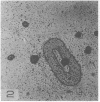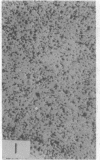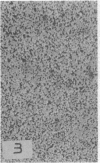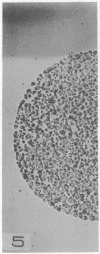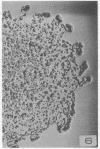Abstract
Experiments carried out with the aid of cellophane membranes demonstrate that the morphogenetic block of certain nonaggregating, "aggregateless," mutants may be overcome by diffusible factors excreted by aggregating wild-type cells. The same differentiation process into aggregation-competent cell is observed if mutant amoebae are subjected to external 3':5'-cAMP pulses imposed at 5 min intervals. Wild-type amoebae also respond to cAMP pulses, since the onset of differentiation is more precocious in pulsed than in unpulsed populations. These data suggest that chemotactic signals act as an inducer of cell differentiation.
Full text
PDF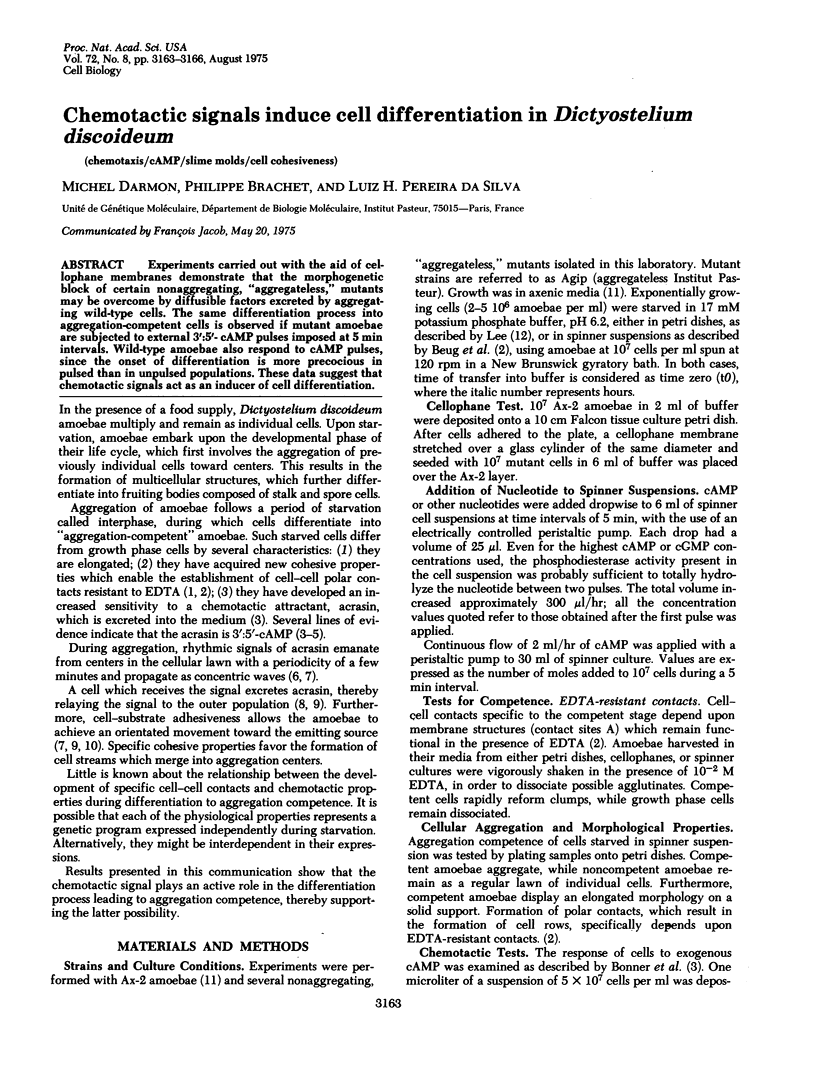
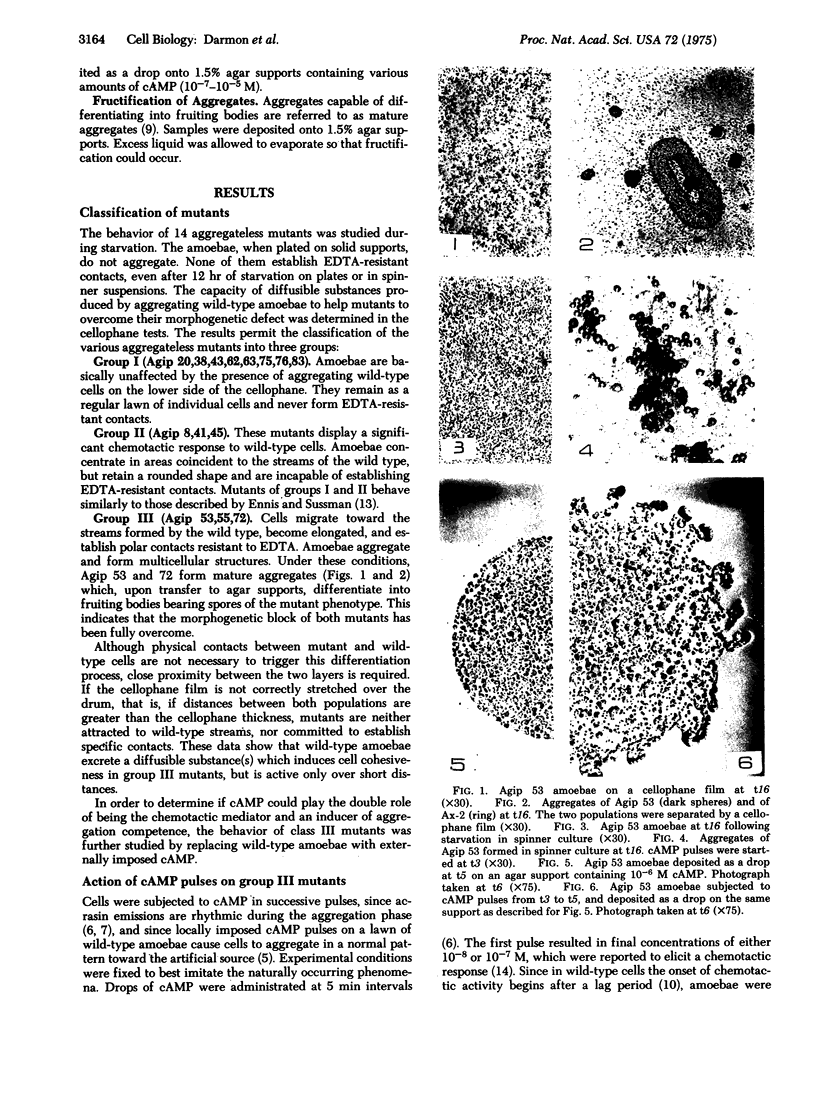
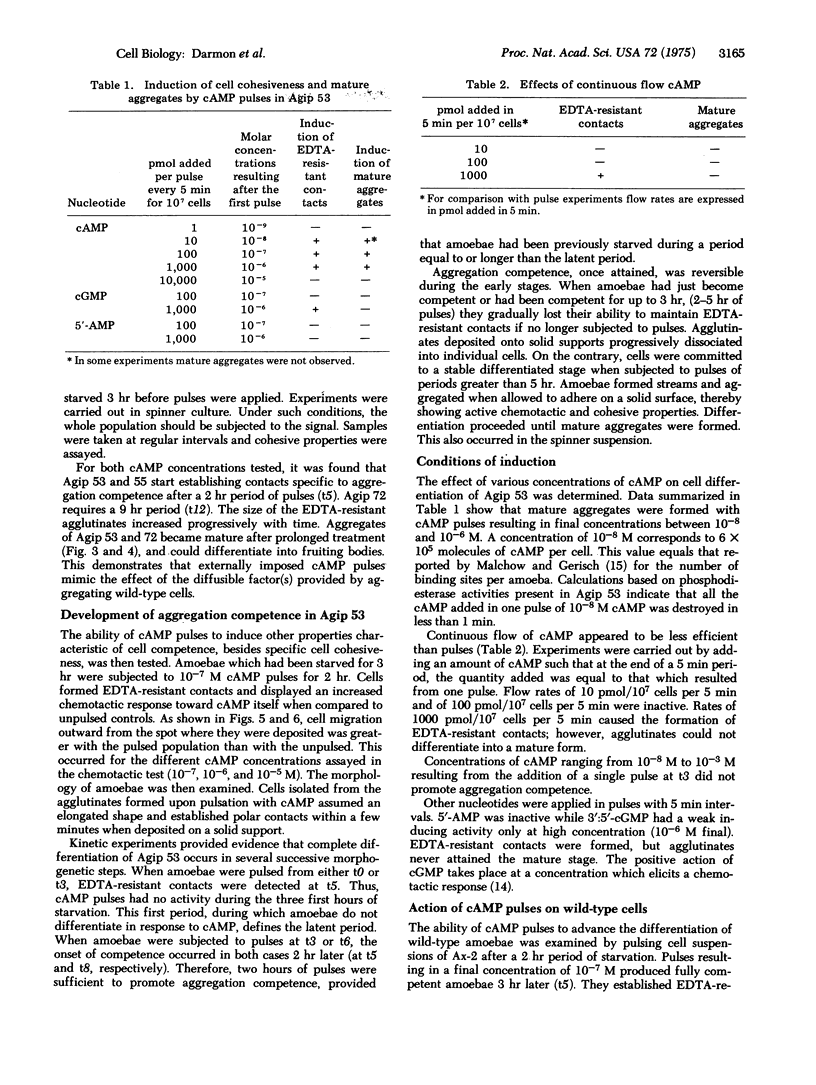
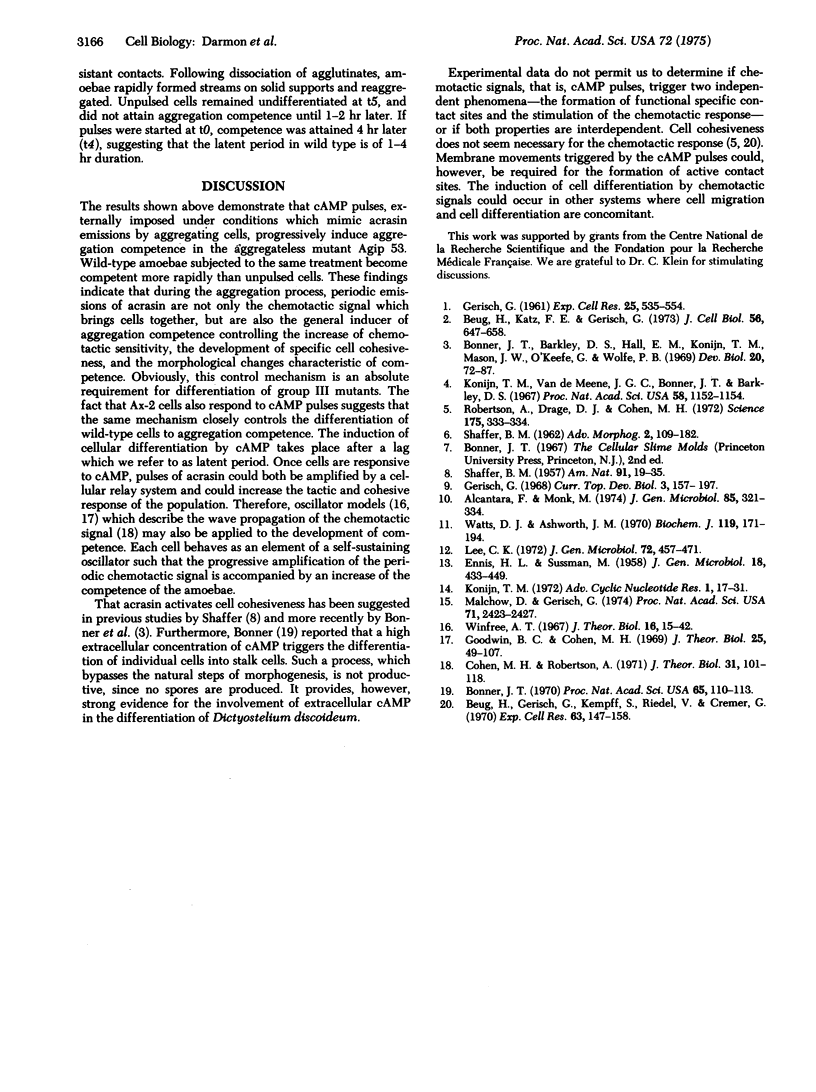
Images in this article
Selected References
These references are in PubMed. This may not be the complete list of references from this article.
- Alcantara F., Monk M. Signal propagation during aggregation in the slime mould Dictyostelium discoideum. J Gen Microbiol. 1974 Dec;85(2):321–334. doi: 10.1099/00221287-85-2-321. [DOI] [PubMed] [Google Scholar]
- Beug H., Gerisch G., Kempff S., Riedel V., Cremer G. Specific inhibition of cell contact formation in Dictyostelium by univalent antibodies. Exp Cell Res. 1970 Nov;63(1):147–158. doi: 10.1016/0014-4827(70)90343-5. [DOI] [PubMed] [Google Scholar]
- Beug H., Katz F. E., Gerisch G. Dynamics of antigenic membrane sites relating to cell aggregation in Dictyostelium discoideum. J Cell Biol. 1973 Mar;56(3):647–658. doi: 10.1083/jcb.56.3.647. [DOI] [PMC free article] [PubMed] [Google Scholar]
- Bonner J. T., Barkley D. S., Hall E. M., Konijn T. M., Mason J. W., O'Keefe G., 3rd, Wolfe P. B. Acrasin, Acrasinase, and the sensitivity to acrasin in Dictyostelium discoideum. Dev Biol. 1969 Jul;20(1):72–87. doi: 10.1016/0012-1606(69)90005-0. [DOI] [PubMed] [Google Scholar]
- Bonner J. T. Induction of stalk cell differentiation by cyclic AMP in the cellular slime mold Dictyostelium discoideum. Proc Natl Acad Sci U S A. 1970 Jan;65(1):110–113. doi: 10.1073/pnas.65.1.110. [DOI] [PMC free article] [PubMed] [Google Scholar]
- Cohen M. H., Robertson A. Wave propagation in the early stages of aggregation of cellular slime molds. J Theor Biol. 1971 Apr;31(1):101–118. doi: 10.1016/0022-5193(71)90124-x. [DOI] [PubMed] [Google Scholar]
- ENNIS H. L., SUSSMAN M. Synergistic morphogenesis by mixtures of Dictyostelium discoideum wild-type and aggregateless mutants. J Gen Microbiol. 1958 Apr;18(2):433–449. doi: 10.1099/00221287-18-2-433. [DOI] [PubMed] [Google Scholar]
- GERISCH G. [Cell functions and change in cell function in the development of Dictyostelium discoideum. V. Stagespecific cell contact formation and its quantitative evaluation]. Exp Cell Res. 1961 Dec;25:535–554. doi: 10.1016/0014-4827(61)90189-6. [DOI] [PubMed] [Google Scholar]
- Gerisch G. Cell aggregation and differentiation in Dictyostelium. Curr Top Dev Biol. 1968;3:157–197. doi: 10.1016/s0070-2153(08)60354-3. [DOI] [PubMed] [Google Scholar]
- Goodwin B. C., Cohen M. H. A phase-shift model for the spatial and temporal organization of developing systems. J Theor Biol. 1969 Oct;25(1):49–107. doi: 10.1016/s0022-5193(69)80017-2. [DOI] [PubMed] [Google Scholar]
- Konijn T. M. Cyclic AMP as a first messenger. Adv Cyclic Nucleotide Res. 1972;1:17–31. [PubMed] [Google Scholar]
- Konijn T. M., Van De Meene J. G., Bonner J. T., Barkley D. S. The acrasin activity of adenosine-3',5'-cyclic phosphate. Proc Natl Acad Sci U S A. 1967 Sep;58(3):1152–1154. doi: 10.1073/pnas.58.3.1152. [DOI] [PMC free article] [PubMed] [Google Scholar]
- Lee K. C. Permeability of Dictyostelium discoideum towards amino acids and inulin: a possible relationship between initiation of differentiation and loss of "pool" metabolites. J Gen Microbiol. 1972 Oct;72(3):457–471. doi: 10.1099/00221287-72-3-457. [DOI] [PubMed] [Google Scholar]
- Malchow D., Gerisch G. Short-term binding and hydrolysis of cyclic 3':5'-adenosine monophosphate by aggregating Dictyostelium cells. Proc Natl Acad Sci U S A. 1974 Jun;71(6):2423–2427. doi: 10.1073/pnas.71.6.2423. [DOI] [PMC free article] [PubMed] [Google Scholar]
- Robertson A., Drage D. J., Cohen M. H. Control of Aggregation in Dictyostelium discoideum by an External Periodic Pulse of Cyclic Adenosine Monophosphate. Science. 1972 Jan 21;175(4019):333–335. doi: 10.1126/science.175.4019.333. [DOI] [PubMed] [Google Scholar]
- Watts D. J., Ashworth J. M. Growth of myxameobae of the cellular slime mould Dictyostelium discoideum in axenic culture. Biochem J. 1970 Sep;119(2):171–174. doi: 10.1042/bj1190171. [DOI] [PMC free article] [PubMed] [Google Scholar]
- Winfree A. T. Biological rhythms and the behavior of populations of coupled oscillators. J Theor Biol. 1967 Jul;16(1):15–42. doi: 10.1016/0022-5193(67)90051-3. [DOI] [PubMed] [Google Scholar]



